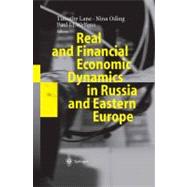
What is included with this book?
| Introduction | 1 | (6) | |||
|
|||||
| A. Capital Flows to Transition Economies: Reasons, Risks, and Policy Responses | |||||
|
|||||
|
7 | (1) | |||
|
8 | (5) | |||
|
8 | (2) | |||
|
10 | (1) | |||
|
11 | (1) | |||
|
12 | (1) | |||
|
13 | (5) | |||
|
14 | (1) | |||
|
15 | (1) | |||
|
15 | (1) | |||
|
16 | (1) | |||
|
17 | (1) | |||
|
18 | (1) | |||
|
19 | (7) | |||
|
26 | (3) | |||
| B. Long Term Structural Change and Productivity Growth in Russia | |||||
|
|||||
|
29 | (3) | |||
|
32 | (8) | |||
|
40 | (3) | |||
|
43 | (2) | |||
|
45 | (4) | |||
|
49 | (4) | |||
|
53 | (3) | |||
|
56 | (1) | |||
| C. Innovation, Growth and Wage Structure in Transforming Economies | |||||
|
|||||
|
57 | (2) | |||
|
59 | (7) | |||
|
66 | (5) | |||
|
71 | (3) | |||
|
74 | (3) | |||
|
77 | (6) | |||
|
83 | (2) | |||
|
85 | (2) | |||
| D. Financial Sector and Human Capital in a Long-Term Growth Perspective: The Case of Russia | |||||
|
|||||
|
87 | (6) | |||
|
93 | (16) | |||
|
93 | (10) | |||
|
103 | (6) | |||
|
109 | (2) | |||
|
111 | (4) | |||
|
115 | (4) | |||
| E. Structure and Growth of Private Consumption in Russia and East Germany | |||||
|
|||||
|
119 | (1) | |||
|
120 | (1) | |||
|
121 | (2) | |||
|
123 | (5) | |||
|
128 | (4) | |||
|
132 | (2) | |||
|
134 | (1) | |||
| F. Labor Market Transformation and Hidden Unemployment in Russia | |||||
|
|||||
|
135 | (2) | |||
|
137 | (3) | |||
|
140 | (4) | |||
|
144 | (1) | |||
|
145 | (4) | |||
|
149 | (3) | |||
|
152 | (1) | |||
|
153 | (2) | |||
|
155 | (4) | |||
| G. Principles of Market-Oriented Labor Market Policies | |||||
|
|||||
|
159 | (1) | |||
|
159 | (2) | |||
|
161 | (3) | |||
|
164 | (5) | |||
|
169 | (4) | |||
|
173 | (3) | |||
|
176 | (2) | |||
|
178 | (3) | |||
| H. Rent-Seeking and Rent-Setting: Government Versus Competition (The Case of St. Petersburg) | |||||
|
|||||
|
181 | (1) | |||
|
182 | (2) | |||
|
184 | (1) | |||
|
185 | (2) | |||
|
187 | (3) | |||
|
190 | (2) | |||
|
192 | (1) | |||
|
193 | (2) | |||
| I. Powerful Groups and Corruption | |||||
|
|||||
|
195 | (1) | |||
|
196 | (8) | |||
|
204 | (2) | |||
|
206 | (1) | |||
| J. Regional Dimension of the Market Transformation in Russia | |||||
|
|||||
|
207 | (1) | |||
|
207 | (3) | |||
|
210 | (4) | |||
|
214 | (2) | |||
|
216 | (4) | |||
|
220 | (1) | |||
|
221 | (6) | |||
| K. Foreign Trade Policies in Transformational Russian and Ukrainian Economies | |||||
|
|||||
|
227 | (1) | |||
|
228 | (6) | |||
|
234 | (9) | |||
|
243 | (4) | |||
|
247 | (3) | |||
|
250 | (1) | |||
| L. The Role of Foreign Direct Investment in Transformation | |||||
|
|||||
|
251 | (4) | |||
|
255 | (4) | |||
|
259 | (5) | |||
|
259 | (3) | |||
|
262 | (2) | |||
|
264 | (8) | |||
|
264 | (1) | |||
|
265 | (4) | |||
|
269 | (3) | |||
|
272 | (1) | |||
|
273 | (2) | |||
|
275 | (2) | |||
| M. Data Appendix | 277 | ||||
|
279 | (4) | |||
|
283 | (4) | |||
|
287 | (2) | |||
|
289 |
The New copy of this book will include any supplemental materials advertised. Please check the title of the book to determine if it should include any access cards, study guides, lab manuals, CDs, etc.
The Used, Rental and eBook copies of this book are not guaranteed to include any supplemental materials. Typically, only the book itself is included. This is true even if the title states it includes any access cards, study guides, lab manuals, CDs, etc.